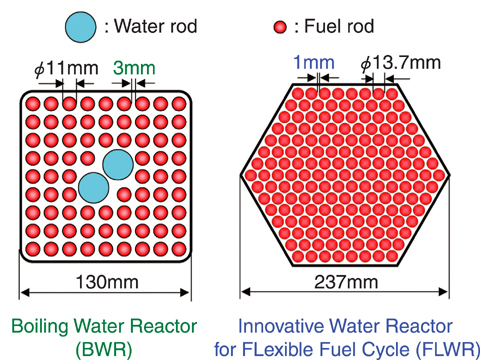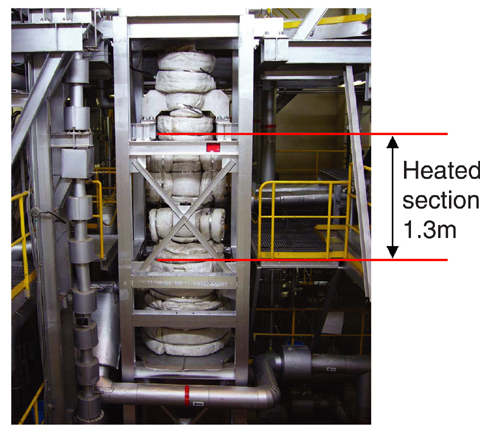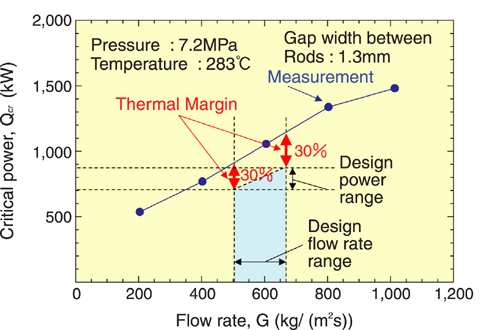
Fig.7-4 Comparison of the specifications of two rod bundles

Fig.7-5 Appearance of a test section for large-scale experiments

Fig.7-6 Experimentally derived thermal margin under FLWR operating conditions
An Innovative Water Reactor for Flexible Fuel Cycle (FLWR) aims at the achievement of a high conversion ratio of plutonium mixed oxide (MOX) fuel, based on well-tested BWR technology. Since the FLWR makes plutonium multi-recycling possible, the reactor fills the need for effective utilization of uranium resources and long-term energy supply. Fig.7-4 shows a comparison of the specifications of rod bundles of a boiling water reactor (BWR) and the FLWR. The FLWR core has a tight-lattice bundle structure, and it is operated under low mass velocity and high void fraction conditions. These conditions make core cooling difficult, and the FLWR thermal-hydraulic characteristics under such conditions are not known well. The confirmation of thermal-hydraulic characteristics is, therefore, one of the most important R&D requirements for the FLWR design.
We investigated the thermal-hydraulic performance of the FLWR core using a test section with 37-rod bundles under high pressure conditions simulating the FLWR operating conditions. Fig.7-5 is a photograph of the test section. We measured critical power and pressure drop in the tight-lattice bundles under steady state and transient conditions.
Fig.7-6 shows a typical thermal margin observed under the FLWR operating conditions. The result obtains that the FLWR has sufficient thermal margins for cooling of the core.
Present study is the result of Development of a Fuel Assembly for Very High Burnup Water-cooled Breeder Reactor entrusted by the Ministry of Education, Culture, Sports, Science and Technology of Japan (MEXT).
<Previous: 7 Nuclear Science and Engineering Research | Next: 7-2 >